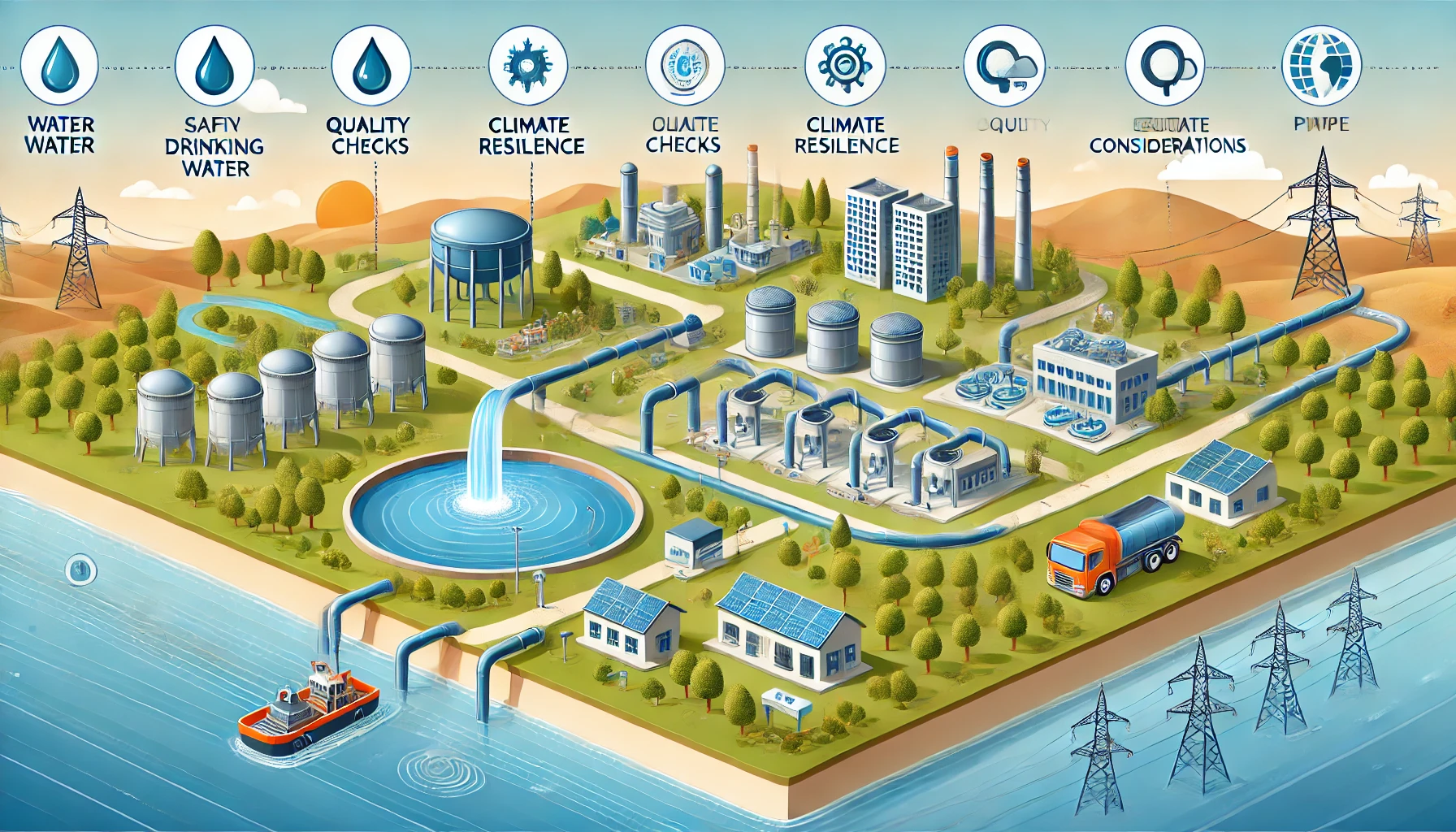Water Safety for All: WHO and IWA’s Proactive Approach to Clean Drinking Water
The WHO and IWA's updated "Water Safety Plan Manual" provides a step-by-step guide for water suppliers to ensure safe drinking water through risk management, emphasizing equity, climate resilience, and proactive hazard control. It offers practical tools, examples, and case studies to support global, sustainable water safety practices.

The World Health Organization (WHO), in collaboration with the International Water Association (IWA), has released the second edition of its "Water Safety Plan Manual," offering a comprehensive, step-by-step guide for drinking-water suppliers worldwide to implement robust water safety plans (WSPs). This updated manual seeks to enhance public health by helping water suppliers assess and manage risks proactively, ensuring that safe drinking water is accessible from the point of capture through to the consumer. The guide provides a framework for understanding the complexities of water supply systems and navigating potential threats to water quality and safety, emphasizing the importance of consistent, reliable water supply management. Aimed at a range of stakeholders, including water suppliers, regulatory bodies, and public health institutions, the manual outlines a structured process for identifying hazards, assessing risks, and implementing control measures, all designed to prevent contamination and safeguard public health. With a clear focus on global applicability, it integrates practical guidance and real-world examples that cater to varying socioeconomic contexts, demonstrating how water safety planning can be applied across diverse environmental and infrastructural settings.
Protecting Water from Source to Tap: A Multi-Barrier Approach
At the core of this manual is the WSP approach, based on a systematic, multi-barrier strategy that safeguards water from source to tap. This approach involves identifying key hazards at each stage of water supply, from source protection to water treatment and distribution, and implementing protective measures that reduce these risks to acceptable levels. The manual outlines ten essential modules that guide water suppliers through the WSP implementation process, including building a multidisciplinary team, conducting thorough system descriptions, identifying and assessing hazards, validating existing control measures, and planning necessary improvements. Emphasis is placed on effective monitoring, which involves regular checks to ensure that all risk control measures are functioning as intended, thus providing an ongoing assessment of water quality and safety. Verification processes and audits play a key role in ensuring compliance with safety standards and helping suppliers respond to any emerging issues, thereby fostering a culture of continuous improvement within water management systems.
Focus on Equity and Climate Resilience in Water Management
One of the standout features of this edition is its focus on equity and climate resilience. Recognizing that water access is not always equal, the manual encourages water suppliers to consider the needs of disadvantaged groups who might otherwise lack consistent access to safe drinking water. This could include those living in informal settlements or remote areas, who might face unique challenges in water access and quality. By incorporating equity considerations, the manual aims to promote a fair distribution of resources and safety measures, ensuring that all users, regardless of socioeconomic status, have access to safe water. Alongside this, climate resilience is a significant addition to the WSP framework, reflecting the increasing threat that climate variability poses to water supply systems worldwide. Water suppliers are encouraged to incorporate past climate impacts into their planning and to anticipate future challenges posed by climate change, such as more frequent droughts, floods, and temperature fluctuations. This adaptation strategy promotes a proactive stance on water safety, allowing suppliers to build flexibility into their systems so they can better withstand environmental stresses and sustain safe water delivery under changing climate conditions.
Real-World Examples Showcase WSP Benefits Globally
Practical examples and case studies enrich the manual, highlighting how different countries have adopted WSPs and adapted the WHO guidelines to suit their specific contexts. These cases illustrate the benefits of WSPs, such as improved microbial water quality, reduced incidence of waterborne diseases, and greater confidence among consumers regarding their water supply. They also showcase the reduction of operational costs and incidents through proactive risk management, which can lead to substantial savings for water suppliers. The manual also details common challenges that water suppliers might face when implementing WSPs, such as managing system complexities or coordinating across multiple stakeholders. The guidance offers solutions, advising water suppliers to adopt iterative improvement strategies that focus on manageable short-term goals while gradually advancing towards more comprehensive water safety practices. The WHO also emphasizes the value of stakeholder engagement, encouraging collaboration with local communities, public health agencies, and environmental organizations to build a supportive framework around water safety efforts.
Tools and Templates for Easy WSP Implementation
Tools and templates provided within the manual further support the WSP process by simplifying documentation, and helping suppliers record essential data like team roles, system schematics, hazard identification, and monitoring results. The manual also encourages suppliers to tailor these tools to their local requirements, underlining the importance of context-specific adaptation in water safety planning. For example, the hypothetical Aquatown WSP model serves as a template that suppliers can adjust to fit their own systems, demonstrating how each of the ten WSP modules can be applied to create a cohesive, effective water safety strategy. Throughout, the manual reinforces that WSPs are not static documents but should evolve alongside advancements in water management practices and emerging health risks, making them adaptable to new challenges as they arise.
A Global Commitment to Safer, More Resilient Water Supplies
The comprehensive manual from WHO and IWA is positioned as an invaluable resource for water suppliers worldwide, equipping them with the tools and insights needed to manage water quality proactively. Its integration of equity and climate resilience considerations marks a progressive step toward inclusive and sustainable water safety management. By focusing on structured yet adaptable processes, the manual aims to inspire a global shift toward safer, more resilient water supplies, ultimately fostering greater health and well-being across communities.
- FIRST PUBLISHED IN:
- Devdiscourse










